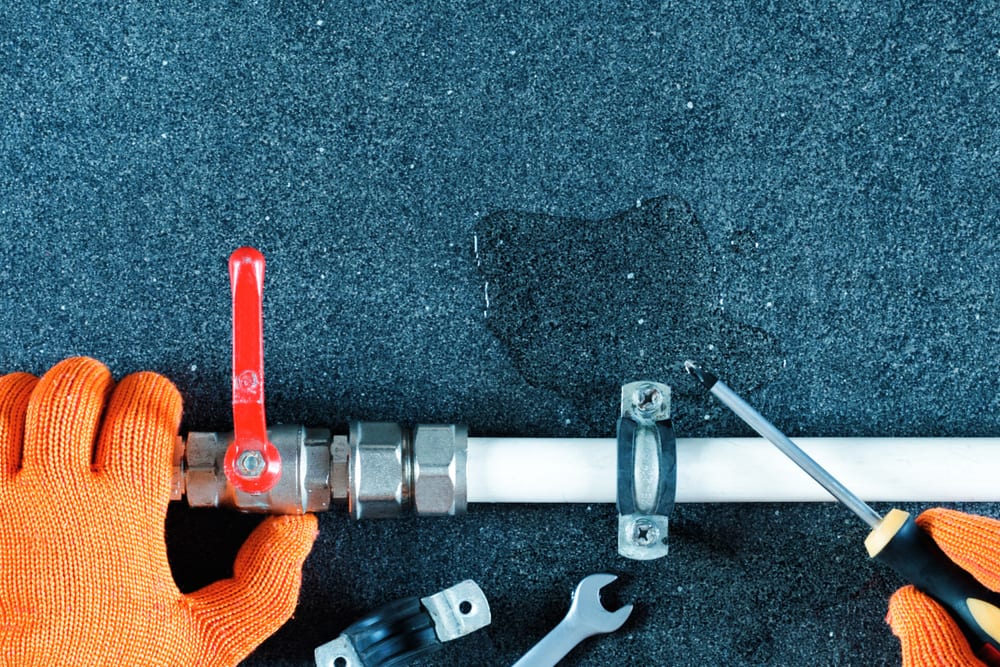Just how to Inspect If Your House Has a Covert Leak
Just how to Inspect If Your House Has a Covert Leak
Blog Article
We've discovered the article relating to Finding hidden leaks directly below on the internet and concluded it made good sense to relate it with you here.

Early detection of leaking water lines can minimize a prospective calamity. Aside from conserving you money, it will lessen the stress as well as disappointment. The moment you discover a leakage, calling your plumber for repairs is the very best solution. Some tiny water leaks may not be noticeable. If you can not discover it with your nude eyes, here are some hacks that help.
1. Check Out the Water Meter
Every residence has a water meter. Inspecting it is a surefire way that aids you uncover leakages. For beginners, shut off all the water sources. Guarantee nobody will certainly flush, use the faucet, shower, run the cleaning equipment or dish washer. From there, go to the meter and watch if it will certainly transform. Since no person is utilizing it, there need to be no motions. That indicates a fast-moving leak if it moves. If you identify no changes, wait an hour or two and check back again. This indicates you may have a slow leak that can also be below ground.
2. Inspect Water Usage
If you identify abrupt adjustments, despite your consumption being the very same, it means that you have leaks in your plumbing system. A sudden spike in your costs suggests a fast-moving leak.
On the other hand, a stable boost every month, even with the very same behaviors, shows you have a sluggish leakage that's also slowly rising. Call a plumber to thoroughly check your building, particularly if you really feel a cozy area on your floor with piping beneath.
3. Do a Food Coloring Examination
30% comes from commodes when it comes to water usage. Test to see if they are running properly. Decrease specks of food color in the storage tank as well as wait 10 minutes. There's a leakage in between the tank as well as bowl if the color in some way infiltrates your dish during that time without flushing.
4. Asses Outside Lines
Do not forget to examine your exterior water lines as well. Test faucets by attaching a yard hose. Must water seep out of the connection, you have a loose rubber gasket. Change this and also ensure all links are tight. If you've got a lawn sprinkler, it will help get it properly analyzed and maintained every year. One small leakage can lose lots of water and increase your water expense.
5. Evaluate as well as Analyze the Situation
House owners need to make it a practice to examine under the sink counters and also also inside cupboards for any type of bad odor or mold and mildew development. These 2 red flags indicate a leakage so prompt interest is required. Doing routine inspections, also bi-annually, can save you from a major problem.
If you recognize your house is currently old, keep a watchful eye on your heating systems, pipes, pipes and so on. Check for discolorations and deteriorating as a lot of pipelines and also home appliances have a life span. They will additionally naturally weaken because of tear and also use. If you believe dripping water lines in your plumbing system, do not wait for it to rise. Call a specialist plumber right away so you don't end up with an awful mess in your home.
Early discovery of leaking water lines can minimize a potential disaster. Some small water leaks might not be visible. Inspecting it is a guaranteed means that helps you find leakages. One little leak can squander heaps of water and increase your water bill.
If you think dripping water lines in your plumbing system, do not wait for it to escalate.
WARNING SIGNS OF WATER LEAKAGE BEHIND THE WALL
PERSISTENT MUSTY ODORS
As water slowly drips from a leaky pipe inside the wall, flooring and sheetrock stay damp and develop an odor similar to wet cardboard. It generates a musty smell that can help you find hidden leaks.
MOLD IN UNUSUAL AREAS
Mold usually grows in wet areas like kitchens, baths and laundry rooms. If you spot the stuff on walls or baseboards in other rooms of the house, it’s a good indicator of undetected water leaks.
STAINS THAT GROW
When mold thrives around a leaky pipe, it sometimes takes hold on the inside surface of the affected wall. A growing stain on otherwise clean sheetrock is often your sign of a hidden plumbing problem.
PEELING OR BUBBLING WALLPAPER / PAINT
This clue is easy to miss in rooms that don’t get much use. When you see wallpaper separating along seams or paint bubbling or flaking off the wall, blame sheetrock that stays wet because of an undetected leak.
BUCKLED CEILINGS AND STAINED FLOORS
If ceilings or floors in bathrooms, kitchens or laundry areas develop structural problems, don’t rule out constant damp inside the walls. Wet sheetrock can affect adjacent framing, flooring and ceilings.
https://www.servicemasterbyzaba.com/blog/how-to-detect-water-leakage-in-walls/

I have been very inquisitive about Hacks to detect leaks and I am praying you enjoyed my piece. Sharing is nice. You just don't know, you could be helping someone out. We thank you for reading our article about Hacks to detect leaks.
Report this page